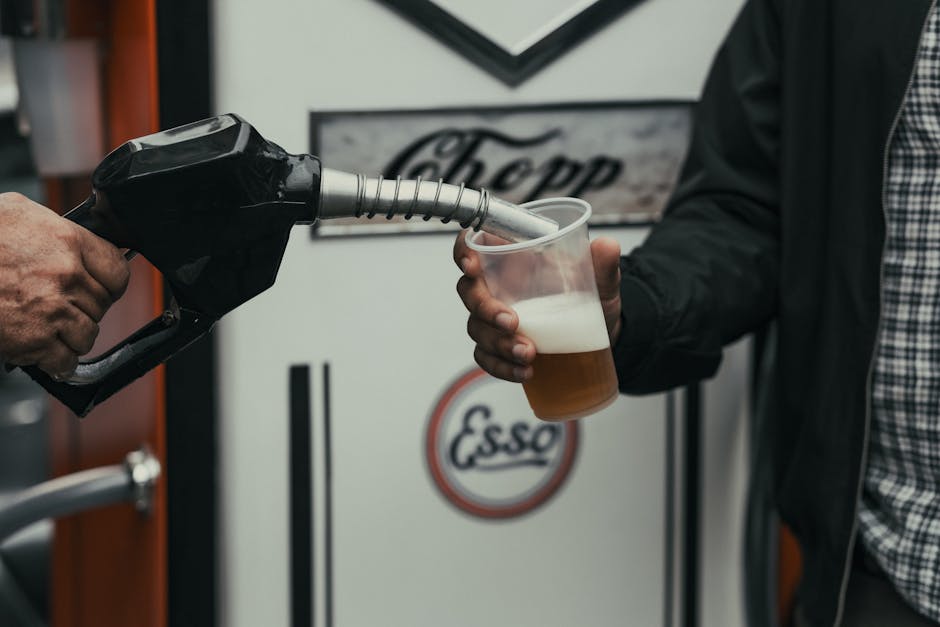The Most Fuel-Efficient Experimental Cars: Pushing the Boundaries of Automotive Efficiency
In the quest for sustainability and energy conservation, automotive engineers and designers have continuously pushed the limits of fuel efficiency. While production vehicles strive for better mileage, experimental cars take efficiency to extraordinary levels, often achieving hundreds—or even thousands—of miles per gallon. These cutting-edge vehicles incorporate advanced aerodynamics, lightweight materials, and innovative propulsion systems to minimize energy consumption. In this article, we explore some of the most fuel-efficient experimental cars ever created, the groundbreaking technologies behind them, and what they mean for the future of transportation.
1. Volkswagen XL1 (2013) – 261 MPG
One of the most famous fuel-efficient experimental cars is the Volkswagen XL1, a diesel-electric hybrid that achieved an astonishing 261 miles per gallon (mpg) in real-world testing. With a sleek, aerodynamic design featuring a drag coefficient of just 0.186, the XL1 was engineered to slip through the air with minimal resistance.
Key Features:
- Lightweight construction: Carbon fiber reinforced polymer (CFRP) body kept weight at just 795 kg (1,753 lbs).
- Hybrid powertrain: A 0.8-liter two-cylinder TDI diesel engine paired with an electric motor, producing a combined 68 horsepower.
- Regenerative braking: Captured energy during deceleration to recharge the battery.
Despite its efficiency, the XL1 was never mass-produced due to high manufacturing costs, but its innovations influenced future hybrid and electric vehicles.
2. Edison2 Very Light Car (2010) – Over 100 MPG
Winner of the 2010 Progressive Automotive X Prize, the Edison2 Very Light Car demonstrated that extreme efficiency could be achieved without hybrid or electric technology. Running on E85 ethanol, this ultra-lightweight vehicle achieved over 100 mpg in competition.
Key Features:
- Minimalist design: Weighing only 830 lbs, it had a tiny 250cc internal combustion engine.
- Advanced aerodynamics: A teardrop shape with a drag coefficient of 0.16, one of the lowest ever recorded for a car.
- Efficient suspension: Used in-wheel suspension to reduce weight and friction.
The Edison2 proved that radical weight reduction and aerodynamics could drastically improve fuel efficiency, even with conventional engines.
3. Shell Eco-Marathon Champions – 10,000+ MPG
The Shell Eco-Marathon is a global competition where student teams design hyper-efficient vehicles. Some entries have achieved over 10,000 mpg, making them among the most fuel-efficient machines ever built.
Notable Entries:
- Team Microjoule (France): Achieved 12,665 mpg with a gasoline-powered prototype.
- ETH Zurich (Switzerland): Their hydrogen fuel cell vehicle reached the equivalent of 5,385 mpg.
Key Technologies:
- Ultra-lightweight materials: Many weigh less than 100 lbs.
- Single-cylinder engines or electric motors: Optimized for maximum efficiency.
- Streamlined bodies: Often resembling elongated capsules to minimize drag.
While these vehicles are not practical for daily driving, they showcase the extreme possibilities of fuel efficiency.
4. Aptera Solar-Electric Vehicle – Up to 1,000 MPGe
The Aptera is a three-wheeled, solar-assisted electric vehicle (EV) designed to achieve up to 1,000 miles per gallon equivalent (MPGe). Its futuristic design maximizes energy efficiency through aerodynamics and solar power.
Key Features:
- Solar roof panels: Provide up to 40 miles of free daily charging.
- Ultra-low drag coefficient (0.13): One of the slipperiest vehicle designs ever.
- Lightweight composite body: Reduces energy consumption.
Aptera plans to bring this vehicle to market, potentially revolutionizing energy-efficient personal transportation.
5. Toyota Prius Plug-in Hybrid Experimental Models – 200+ MPG
Toyota has experimented with ultra-efficient versions of its Prius, including a plug-in hybrid prototype that achieved over 200 mpg in optimal conditions.
Innovations Tested:
- Enhanced battery capacity: Allowing longer electric-only driving.
- Improved thermal efficiency: Reducing engine energy loss.
- Solar roof panels: To supplement battery charging.
These experiments paved the way for the Toyota Prius Prime, which now achieves 133 MPGe in production form.
The Future of Fuel Efficiency
Experimental cars like these demonstrate that extreme fuel efficiency is possible with the right combination of aerodynamics, lightweight materials, and alternative propulsion systems. While many of these vehicles are not yet practical for mass production, their technologies are gradually influencing mainstream automotive design.
Emerging Trends:
- Solar-integrated EVs (like Aptera and Lightyear)
- Hydrogen combustion engines (Toyota’s experiments)
- Ultra-efficient micro-cars for urban mobility
As environmental concerns and fuel costs rise, the lessons from these experimental cars may soon shape the next generation of consumer vehicles.
Conclusion
From the Volkswagen XL1 to the Shell Eco-Marathon champions, the most fuel-efficient experimental cars prove that automotive efficiency has no absolute limit. While some designs remain prototypes, their innovations inspire future vehicles that could drastically reduce fuel consumption and emissions. As technology advances, we may soon see production cars that rival these experimental marvels in efficiency—ushering in a new era of sustainable transportation.
Would you drive a car that gets 1,000 MPG, even if it looked unconventional? The future of mobility might demand exactly that. 🚗💨

